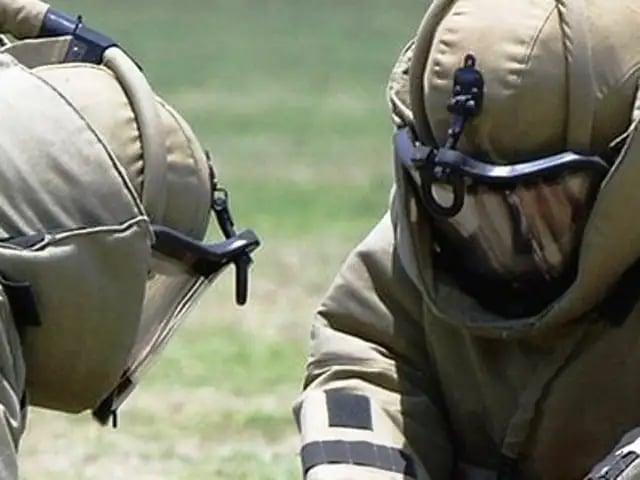Understanding the Recent Bomb Threats in Russia
The phenomenon of multiple bomb threats across Russia is not entirely new, but the scale and coordination involved in recent incidents are alarming. Authorities have reported hundreds of anonymous threats, often delivered via email or phone, leading to mass evacuations and extensive security sweeps. These threats have disrupted daily life, causing panic and fear among the populace.
REPORTRUSSIATERRORISMTHREATS
1/3/20256 min read


Recent Russian Bomb Threats: An Investigative Report
The phenomenon of multiple bomb threats across Russia is not entirely new, but the scale and coordination involved in recent incidents are alarming. Authorities have reported hundreds of anonymous threats, often delivered via email or phone, leading to mass evacuations and extensive security sweeps. These threats have disrupted daily life, causing panic and fear among the populace.
Historical Context
To comprehend the current situation, it is essential to consider the historical context of bomb threats in Russia. Over the decades, Russia has dealt with significant security challenges, including terrorism, domestic unrest, and regional conflicts. During the Chechen wars, for instance, bomb threats were a common tactic used to instill fear and disrupt daily life. Moreover, the post-Soviet era saw an increase in organized crime, which occasionally resorted to threats and violence to achieve their goals. These historical instances provide a backdrop against which the current threats are unfolding.
The methods employed in past bomb threats often revolved around physical intimidation and straightforward extortion. However, with advancements in technology, the nature of these threats has evolved, becoming more sophisticated and difficult to trace. Understanding this evolution is crucial for developing effective countermeasures. Furthermore, the geopolitical shifts in the region have sometimes influenced the frequency and nature of these threats, as external and internal pressures shape the tactics used by various actors.
Current Patterns and Trends
The recent wave of threats demonstrates a sophisticated pattern, suggesting a well-coordinated effort to maximize disruption. The threats are often simultaneous, targeting multiple locations across different cities. This strategy not only strains security resources but also amplifies public anxiety.
The use of digital platforms has become a hallmark of these threats, with perpetrators exploiting encrypted communication tools to send anonymous warnings. This technological edge makes it challenging for authorities to trace the origins of threats swiftly. Additionally, there appears to be a strategic selection of high-profile targets, such as major urban centers and critical infrastructure, to ensure maximum visibility and impact.
Another discernible trend is the timing of these threats. Often, they coincide with significant national events or political gatherings, suggesting an intention to disrupt or divert attention. This timing implies a level of strategic planning aimed at maximizing psychological and media impact. Understanding these patterns is crucial for anticipating potential threats and adjusting security measures proactively.
Investigating the Motives
Understanding the motives behind these bomb threats is complex, as they may arise from diverse sources, each with its own agenda.
Potential Perpetrators
Terrorist Organizations: These groups may use bomb threats as a psychological weapon to terrorize the population and challenge the government. Their objectives often extend beyond immediate fear, aiming to destabilize the political climate and weaken governmental authority. By creating an atmosphere of constant threat, they seek to erode public confidence in the state's ability to protect its citizens.
Political Dissidents: Some threats may originate from political adversaries seeking to undermine the current administration. These actors might use threats as a form of protest or to draw attention to political grievances. In some cases, dissidents might not intend to carry out actual attacks but rather aim to highlight perceived governmental failures through the fear and chaos generated by threats.
Cybercriminals: In some instances, cybercriminals have been known to issue threats for extortion purposes or to create digital chaos. Their motives are primarily financial, leveraging fear to extract money from institutions or individuals. The anonymity provided by the internet aids these perpetrators in launching threats without immediate detection, complicating law enforcement efforts to bring them to justice.
Psychological Impact
The psychological impact of these threats cannot be overstated. They generate fear and uncertainty, affecting the mental well-being of citizens. Repeated evacuations and constant alerts contribute to a climate of insecurity, which can have long-term societal implications.
The constant state of alert can lead to heightened stress levels among the population, as individuals are forced to adapt to a reality where public spaces are potential targets. This stress can manifest in various ways, including anxiety disorders and a general sense of mistrust in public environments. Moreover, the unpredictability of these threats means that daily routines are frequently disrupted, leading to frustration and a sense of helplessness.
In addition to individual psychological effects, the broader societal impact includes strained social cohesion. Communities may become more insular, as fear of threats discourages social interaction and public engagement. This erosion of trust can have lasting implications, as it undermines the collective resilience needed to recover from and respond to ongoing security challenges.
Response and Security Measures
In response to the bomb threats, Russian authorities have intensified security measures across the nation. These measures include increased surveillance, heightened security checks, and rapid response teams ready to address any imminent danger.
Law Enforcement and Intelligence
Russian law enforcement agencies, alongside intelligence services, are working tirelessly to trace the origins of these threats. This involves using advanced technology to track electronic communications and employing informants to gather intelligence on potential threats.
The collaboration between different branches of law enforcement is crucial, as it allows for a more comprehensive approach to threat detection and response. Agencies are investing in cutting-edge technology, such as AI and machine learning, to analyze patterns in threat communications and predict potential attacks. Informants play a vital role in this ecosystem, providing on-the-ground intelligence that complements digital surveillance efforts.
In addition to technological advancements, authorities are focusing on inter-agency cooperation and information sharing. This approach ensures that all relevant data is available to those who need it, enabling quicker response times and more effective threat neutralization. International cooperation is also a key component, as global networks of crime and terror necessitate a coordinated response across borders.
Public Awareness and Cooperation
Authorities have also emphasized the importance of public awareness and cooperation. Citizens are encouraged to report suspicious activities and follow official guidelines during evacuations and security checks. This collective vigilance is crucial in mitigating the impact of bomb threats.
Public awareness campaigns aim to educate citizens on recognizing potential threats and the appropriate actions to take in such situations. These campaigns often involve multimedia efforts, including social media, television, and print, to reach a wide audience. By fostering a culture of vigilance, authorities hope to empower citizens to act as the first line of defense against threats.
Community engagement is another critical element in this strategy. By building trust between law enforcement and the public, authorities can encourage greater cooperation and information sharing. This relationship is pivotal, as timely tips from the public can lead to the prevention of potential attacks and the apprehension of perpetrators.
The Broader Implications
The ongoing bomb threats in Russia have broader implications for national and international security. They highlight vulnerabilities in security infrastructure and the need for comprehensive strategies to address such threats.
Impact on Public Institutions
Public institutions, including schools and hospitals, have been particularly affected. Frequent evacuations disrupt educational activities and healthcare services, posing challenges for administrators and staff.
Educational institutions face significant challenges as they navigate the constant threat of evacuations. The disruption of learning activities not only affects academic performance but also the psychological well-being of students and staff. Schools are forced to invest in additional security measures, diverting resources from educational programs to safety protocols.
Healthcare facilities, on the other hand, face unique challenges during evacuations. The need to protect vulnerable patients while maintaining critical services is a complex task. Hospitals must develop comprehensive evacuation plans that ensure patient safety without compromising care, a balancing act that requires significant planning and resources.
Economic Consequences
The economic repercussions of these threats are significant. Retail businesses in shopping malls and transportation services experience financial losses due to evacuations and reduced consumer confidence. The government must balance security measures with economic stability to ensure long-term prosperity.
The retail sector is particularly vulnerable to the economic impacts of bomb threats. Frequent evacuations deter consumers, leading to decreased sales and potential financial instability for businesses. This downturn can have cascading effects, affecting employment and local economies.
Transportation hubs, critical to the movement of goods and people, face similar challenges. Disruptions in transportation services can lead to delays and increased costs, affecting supply chains and economic productivity. Balancing the need for stringent security with the efficient operation of transportation networks is essential for maintaining economic stability.
Conclusion: Navigating Uncertainty
As Russia continues to navigate the challenges posed by multiple bomb threats, it is imperative for authorities, citizens, and the international community to collaborate in addressing this complex issue. By understanding the motives, enhancing security measures, and fostering public cooperation, Russia can mitigate the impact of these threats and work towards a more secure future. The situation remains fluid, and ongoing vigilance is essential to safeguard the well-being of the nation.
In this era of uncertainty, it is crucial for all stakeholders to remain adaptive and resilient. Collaborative efforts can pave the way for innovative solutions that address both the immediate and long-term challenges posed by these threats. As the landscape of security threats continues to evolve, so too must the strategies employed to counter them, ensuring that Russia remains vigilant and prepared in the face of adversity.
